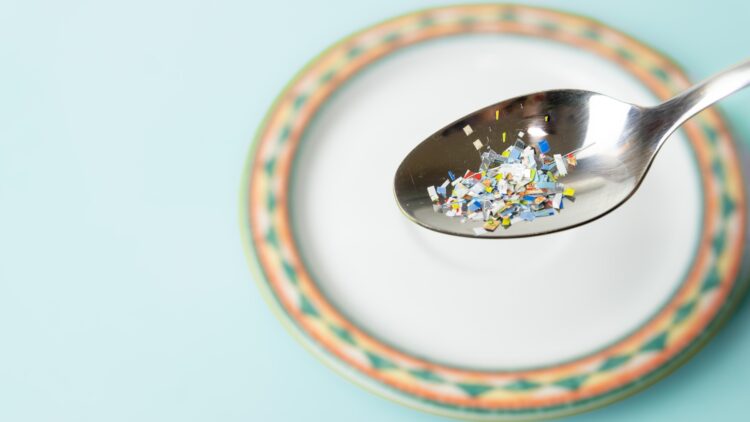The use of plastics in our everyday life has been extensive for a long time now, and the effects on the environment and on our health are undeniable, although knowing the full extent of them is almost impossible, as there is not enough data that we can draw from. The worst thing about plastic is that it takes hundreds of years to fully decompose, but while it does it breaks down into microplastics that end up in our food and drinking water and nanoplastics, which end up everywhere and are causing even more damage than we could have imagined.
A new study authored by Pratik Banerjee, a molecular microbiologist in the Department of Food Science and Human Nutrition at the University of Illinois Urbana-Champaign and a team of researchers has discovered that nanoplastics seem to cause stress for pathogenic E. coli bacteria. While this could sound like a good thing, after all E. coli is quite dangerous to our health, the study proves it is not that simple.
While nanoplastics did not have a visible impact on E. coli’s survival, they did influence other bacterial behaviors, including reduced growth and changes in biofilm formation, but most notably, the presence of nanoplastics appeared to increase the bacteria’s ability to cause disease.
According to Banerjee discovering this is important because, “Other studies have evaluated the interaction of nanoplastics and bacteria, but so far, ours is the first to look at the impacts of microplastics and nanoplastics on human pathogenic bacteria.”
The impact of nanoplastics on human pathogenic bacteria
The study examined how E. coli O157:H7, a well-known source of foodborne illness, reacts to polystyrene-based nanoplastics, one of the most commonly used synthetic polymers. Researchers discovered that when these nanoplastics carry a positive surface charge, they place the bacteria under stress. In response, the microbes ramp up production of Shiga-like toxin, which is central to their ability to cause harm, and given E. coli’s naturally negative surface charge, scientists hypothesized that positively charged particles would interact more aggressively, a theory they tested by exposing the bacteria to nanoplastics with varying charges.
Banerjee explained the process “We started with the surface charge. Plastics have an enormous ability to adsorb chemicals. Each chemical has a different effect on surface charge, based on how much chemical is adsorbed and on what kind of plastic. We didn’t look at the effects of the chemicals themselves in this paper – that’s our next study – but this is the first step in understanding how the surface charge of plastics impacts pathogenic E. coli response,” he adds.
But still the findings were concerning. The study found that positively charged nanoplastics not only made E. coli produce more toxin but also slowed their growth and delayed the early stages of biofilm development. Since forming a biofilm provides bacteria with a protective barrier, understanding how nanoplastics interact with this state is key, and so to investigate, researchers allowed E. coli to establish biofilms on a surface over several days before introducing nanoplastics with varying electrical charges.
The bacteria remained sensitive even in biofilm form, exposure to positively charged particles still triggered stress responses and elevated toxin production. Furthermore, shifts in virulence-related genes were observed under both positively and negatively charged conditions.
“Biofilms are a very robust bacterial structure and are hard to eradicate. They’re a big problem in the medical industry, forming on inserts like catheters or implants, and in the food industry,” Banerjee explained. “One of our goals was to see what happens when this human pathogen, which is commonly transmitted via food, encounters these nanoplastics from the vantage point of a biofilm,” he said.
The fact that E. coli becomes more aggressive when exposed to nanoplastics is a troubling fact considering that it is already known for causing significant outbreaks of foodborne illness. Researchers emphasize that further investigation is essential to better understand how nanoplastic contamination might influence not just E. coli, but a wider range of harmful microbes.

